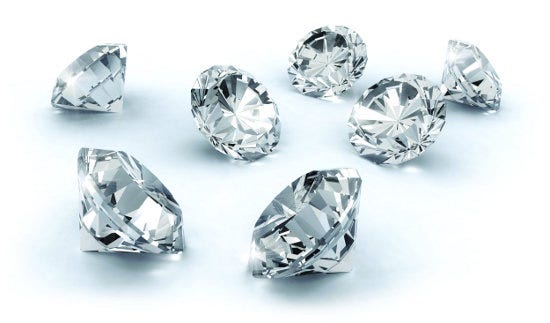Introduction
Buying diamonds is one of the most meaningful and significant purchases in a person’s life. Whether it’s an engagement ring, an anniversary gift, or a personal investment, the experience is tied to emotion, symbolism, and value. In America, the diamond market is not only vast and diverse, but also among the most regulated and transparent in the world.
With countless retailers—both online and offline—and a wide range of options for natural and lab-grown diamonds, buying diamonds in the United States can be a seamless, exciting, and informed process. This article will guide you through every aspect of buying diamonds in America: from understanding quality metrics to finding trustworthy sellers, exploring certification standards, budgeting tips, ethical sourcing, and beyond.
1. Overview of the Diamond Market in America
1.1 Market Size and Influence
The United States is the largest consumer of diamonds globally, accounting for nearly 50% of all diamond jewelry sales. This dominance stems from a long-standing cultural affinity for diamonds and a retail landscape that includes everything from legacy brands to innovative digital platforms.
1.2 Types of Diamonds Available
In the American market, buyers have access to various types of diamonds:
-
Natural Diamonds: Mined from the Earth and valued for their rarity.
-
Lab-Grown Diamonds: Chemically identical to natural diamonds but created in labs.
-
Treated Diamonds: Natural diamonds that undergo processes to improve color or clarity.
2. Understanding the 4Cs of Diamond Quality
The 4Cs—Cut, Color, Clarity, and Carat weight—are the global standard for evaluating diamond quality. In America, understanding these characteristics is crucial before making a purchase.
2.1 Cut
-
Arguably the most important factor.
-
Refers to how well a diamond is shaped and faceted to reflect light.
-
Grading: Poor, Fair, Good, Very Good, Excellent/Ideal.
2.2 Color
-
Measures how colorless a diamond is.
-
Graded from D (colorless) to Z (light yellow or brown).
-
Most popular grades for value: G–J (near-colorless).
2.3 Clarity
-
Assesses the presence of internal inclusions or external blemishes.
-
Common grades include:
-
Flawless (FL)
-
Very Slightly Included (VS1/VS2)
-
Slightly Included (SI1/SI2)
-
2.4 Carat Weight
-
Indicates the size of the diamond.
-
1 carat = 200 milligrams.
-
Price increases with weight, but the cut and brilliance matter more to the naked eye.
3. Where to Buy Diamonds in America
3.1 Physical Retailers
Many Americans still prefer to buy diamonds in person.
Famous Jewelry Retailers in the U.S.:
-
Tiffany & Co.
-
Cartier
-
Zales
-
Kay Jewelers
-
Jared
Diamond Districts:
-
New York City (47th Street): Iconic for diamond shopping.
-
Los Angeles Jewelry District: Offers variety and customization.
-
Chicago Jewelers Row: Trusted by generations.
3.2 Online Diamond Vendors
Online shopping for diamonds has grown exponentially due to its convenience and competitive pricing.
Popular Online Retailers:
-
Blue Nile – Pioneer in online diamond sales.
-
James Allen – High-definition 360° views.
-
Brilliant Earth – Specializes in ethically sourced diamonds.
-
Clean Origin – Lab-grown specialist.
-
Ritani – Offers both online and in-store viewing options.
4. Certifications and Trust
4.1 What Is a Diamond Certificate?
A diamond certificate is a report issued by a gemological lab that details the diamond’s 4Cs and other characteristics. In America, certified diamonds are the norm.
4.2 Trusted Certification Labs
-
GIA (Gemological Institute of America) – Most respected and widely accepted.
-
AGS (American Gem Society) – High standards, especially for cut quality.
-
IGI (International Gemological Institute) – Common for lab-grown diamonds.
4.3 Why Certification Matters
-
Ensures authenticity and quality.
-
Useful for insurance or resale.
-
Provides transparency between buyer and seller.
5. Lab-Grown vs. Natural Diamonds in America
5.1 Growing Popularity of Lab-Grown Diamonds
Americans are increasingly opting for lab-created diamonds for the following reasons:
-
Up to 70% cheaper than mined diamonds.
-
Identical in appearance and structure.
-
Considered more environmentally and ethically friendly.
5.2 Market Trends
-
Many leading retailers now offer both natural and lab-grown options.
-
Millennials and Gen Z buyers are driving the demand for lab-grown gems.
6. Ethical and Conflict-Free Diamonds
6.1 The Kimberley Process
The U.S. participates in the Kimberley Process, which aims to prevent “blood diamonds” from entering the market.
6.2 Responsible Retailers
Reputable sellers offer traceability and commit to sourcing conflict-free diamonds. Brands like Brilliant Earth and Vrai go a step further by offering blockchain tracking and direct-from-origin sourcing.
6.3 The Lab-Grown Alternative
-
No mining required
-
Transparent production
-
Smaller carbon footprint
7. Designing Custom Jewelry in America
7.1 Customization Options
In the U.S., many retailers offer tools to design your ring:
-
Choose diamond shape and carat
-
Select ring setting and metal type
-
Add engravings or custom details
7.2 Popular Diamond Shapes
-
Round Brilliant – Classic and timeless.
-
Princess – Contemporary and bold.
-
Oval – Elongates the finger.
-
Cushion – Soft and romantic.
7.3 Ring Settings
-
Solitaire
-
Halo
-
Pavé
-
Vintage
-
Bezel
8. Budgeting and Price Factors
8.1 How Pricing Works
Diamond pricing in America is influenced by:
-
Carat weight
-
Cut quality
-
Color and clarity
-
Certification
-
Market demand
8.2 Price Ranges
| Carat | Natural Diamond | Lab-Grown Diamond |
|---|---|---|
| 0.50 | $1,000 – $2,000 | $500 – $900 |
| 1.00 | $4,000 – $8,000 | $1,200 – $2,500 |
| 2.00 | $10,000 – $20,000 | $3,000 – $6,000 |
8.3 Money-Saving Tips
-
Choose near-colorless (G–J) instead of colorless.
-
Opt for Slightly Included clarity (SI1 or SI2).
-
Buy just below key carat weights (e.g., 0.95 ct instead of 1.00 ct).
-
Consider lab-grown diamonds for better value.

9. Policies, Returns, and Warranties
9.1 Return and Exchange Policies
American diamond retailers generally offer generous return policies, ranging from 30 to 60 days.
9.2 Resizing and Maintenance
Most stores provide:
-
Free ring resizing within a certain period
-
Lifetime maintenance services
-
Diamond upgrade programs
9.3 Insurance Options
-
Many Americans insure their diamonds through companies like Jewelers Mutual or GemShield.
-
Coverage includes theft, loss, and damage.
10. Avoiding Common Mistakes
10.1 Not Asking for Certification
Always insist on a certified diamond from a trusted lab.
10.2 Overvaluing Carat
Don’t let size overshadow cut and clarity. A well-cut 0.90 ct diamond may sparkle more than a poorly cut 1.00 ct.
10.3 Not Comparing Retailers
Shop around—prices and policies can vary widely.
10.4 Ignoring Online Retail
You can often find better prices and more inventory online, with no compromise in quality.
11. Diamond Investment in the U.S.
11.1 Are Diamonds a Good Investment?
While not traditionally considered a high-return investment, diamonds can retain value if:
-
They are of exceptional quality.
-
They are rare in shape, color, or clarity.
-
They are purchased at a competitive price.
11.2 Buyback and Upgrade Programs
Some American jewelers offer:
-
Trade-in options
-
Lifetime diamond upgrades
-
Buyback guarantees
12. Cultural Significance of Diamonds in America
12.1 Engagement Traditions
-
Over 85% of American proposals involve a diamond ring.
-
Solitaire rings are the most popular.
-
The average spend on an engagement ring in the U.S. is around $6,000.
12.2 Gifting Diamonds
-
Birthdays, anniversaries, and milestones are common occasions.
-
Diamond studs, necklaces, and bracelets are favored.
Conclusion
Buying diamonds in America is a rewarding experience when approached with the right knowledge and planning. Whether you’re seeking a stunning engagement ring, a meaningful gift, or a lasting investment, the U.S. diamond market provides transparency, quality, and variety that few other markets can match.
Key Takeaways:
-
Understand the 4Cs and prioritize cut and certification.
-
Choose between natural and lab-grown based on your values and budget.
-
Use online tools to compare prices and options.
-
Always buy certified diamonds from reputable vendors.
-
Consider ethical sourcing and long-term maintenance.
With so many resources, retailers, and protections in place, buying diamonds in America can be both a safe and magical journey.
